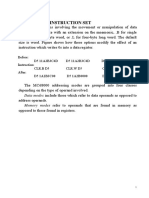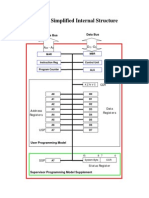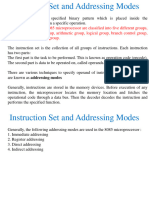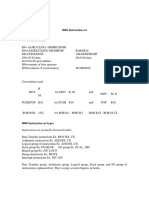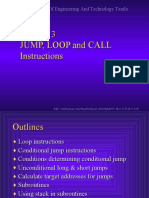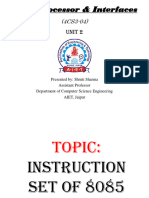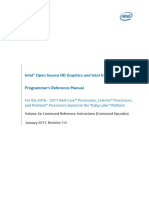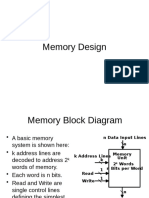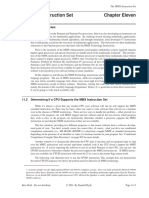0% found this document useful (0 votes)
20 views68 pagesMicroprocessor Notes 3
The document provides an overview of the instruction set for the 68000 microprocessor, detailing various data transfer instructions such as MOVE, EXG, and SWAP, along with arithmetic operations like ADD and SUB. It explains how to manipulate data between memory and registers, including immediate operand handling and the effects of arithmetic operations on flags. Additionally, it covers specific instructions for loading effective addresses and performing multiplication operations.
Uploaded by
Silasri BalakrishnanCopyright
© © All Rights Reserved
We take content rights seriously. If you suspect this is your content, claim it here.
Available Formats
Download as PPTX, PDF, TXT or read online on Scribd
0% found this document useful (0 votes)
20 views68 pagesMicroprocessor Notes 3
The document provides an overview of the instruction set for the 68000 microprocessor, detailing various data transfer instructions such as MOVE, EXG, and SWAP, along with arithmetic operations like ADD and SUB. It explains how to manipulate data between memory and registers, including immediate operand handling and the effects of arithmetic operations on flags. Additionally, it covers specific instructions for loading effective addresses and performing multiplication operations.
Uploaded by
Silasri BalakrishnanCopyright
© © All Rights Reserved
We take content rights seriously. If you suspect this is your content, claim it here.
Available Formats
Download as PPTX, PDF, TXT or read online on Scribd
/ 68
